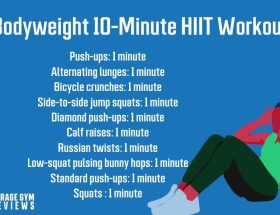Strength training is an essential component of any fitness routine. Whether you’re looking to build muscle, improve performance, or simply stay healthy and active, progressive overload is the key to achieving your goals.
What is Progressive Overload?
Progressive overload is a principle in strength training that involves gradually increasing the intensity, duration, or frequency of your workouts over time. By continually challenging your muscles with greater resistance, you stimulate muscle growth and strength gains.
How Does Progressive Overload Work?
When you lift weights, your muscles are subjected to stress and undergo microscopic tears. As your body repairs these tears, your muscles become stronger and larger to handle the increased load. By progressively increasing the weight, sets, reps, or intensity of your workouts, you ensure that your muscles are always being challenged and forced to adapt.
Benefits of Progressive Overload
1. Increased Muscle Growth: By consistently pushing your muscles to lift heavier weights, you promote muscle hypertrophy and growth.
2. Strength Gains: Progressive overload is the most effective way to increase your strength and improve your performance in the gym or sports.
3. Plateau Prevention: By avoiding the dreaded plateau, where your progress stalls, you continue to see improvements in your fitness level.
4. Injury Prevention: By gradually increasing the intensity of your workouts, you reduce the risk of overuse injuries and allow your body to adapt safely.
How to Implement Progressive Overload
1. Increase Weight: Gradually add more weight to your lifts as you become stronger. This can be done by using heavier dumbbells or barbells, increasing resistance on machines, or adding weight plates.
2. Increase Reps and Sets: If you can’t add more weight, you can increase the number of reps or sets you perform to challenge your muscles further.
3. Manipulate Tempo: Slow down the tempo of your lifts to increase time under tension and make your muscles work harder.
4. Progressively Increase Intensity: Use advanced techniques like drop sets, supersets, or pyramid sets to increase the intensity of your workouts.
Sample Progressive Overload Workout
Here’s an example of how you can implement progressive overload in your strength training routine:
Week 1: Squats – 3 sets of 8 reps with 50kg
Week 2: Squats – 3 sets of 8 reps with 55kg
Week 3: Squats – 3 sets of 8 reps with 60kg
Week 4: Squats – 4 sets of 8 reps with 60kg
Conclusion
Progressive overload is the secret to strength training success. By consistently challenging your muscles and pushing your limits, you can achieve greater muscle growth, strength gains, and overall fitness improvements. Remember to track your progress, adjust your workouts accordingly, and stay committed to your goals. With progressive overload, the sky is the limit for your strength training journey.
“`
**Note: The HTML markup is used to structure the content and enhance readability for web publishing purposes.**







